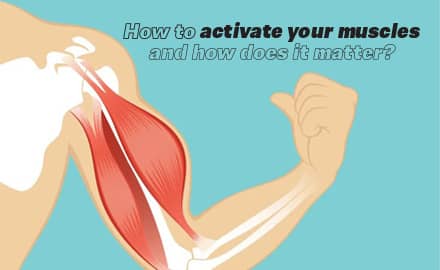
Activating your muscles is a vital aspect of any workout routine, whether you're looking to build strength, improve your endurance, or maintain your overall health and fitness. Muscle activation involves waking up your muscles and preparing them for movement, which is necessary to prevent injury, improve your range of motion, and maximize your overall performance.
The first step in activating your muscles is to warm up your body. It can involve performing light cardio exercises, such as jogging or jumping jacks, for a few minutes to increase your heart rate and get your blood flowing. It will help to loosen up your muscles and prepare them for more intense exercises.
Once you've warmed up, it's essential to concentrate on specific muscle groups to activate them. One effective way to do this is through dynamic stretching. Dynamic stretching involves moving your body through a range of motion, which helps to increase your flexibility, improve your balance, and activate your muscles.
To activate your leg muscles perform walking lunges or high knees. These exercises involve moving your legs through a range of motion, which will help to activate your quads, hamstrings, and glutes. Similarly, if you want to activate your core muscles, you could perform planks or mountain climbers, which engage your abs, obliques, and lower back muscles.
Another effective way to activate your muscles is through resistance training. Resistance training involves using weights, resistance bands, or your body weight to perform exercises that target specific muscle groups. This kind of training helps to build strength and improves balance and stability.
When performing resistance training, it's vital to focus on proper form and technique to ensure that you're engaging the right muscles and minimizing your risk of injury. Begin with lighter weights or resistance bands and gradually increase the weight or resistance as your muscles become stronger and more activated.
In addition to resistance training, you can activate your muscles through cardiovascular exercise. Cardiovascular exercise, such as running or cycling, helps to increase your heart rate and improve your endurance, while also engaging your leg muscles and core muscles.
So, why does muscle activation matter? For one, it helps to prevent injury. When your muscles are activated and warmed up, they're better able to handle the stress of exercise and are less likely to become strained or injured. Muscle activation also improves your range of motion, which can help to prevent joint pain and stiffness.
Additionally, muscle activation helps to improve your overall performance. When your muscles are activated and engaged, you're able to lift more weight, run faster, and perform more reps, which can help you to achieve your fitness goals more quickly.
Finally, muscle activation is crucial for maintaining your overall health and fitness. Regular exercise and muscle activation can help to reduce your risk of chronic diseases, such as heart disease, diabetes, and obesity, while also improving your mental health and reducing your stress levels.
In conclusion, activating your muscles is an essential component of any workout routine. By warming up your body, performing dynamic stretches, and engaging in resistance training and cardiovascular exercise, you can activate your muscles by improving overall performance, preventing injury, and maintaining your health and fitness. So, the next time you hit the gym or head out for a run, ensure to activate your muscles first and get the most out of your workout.